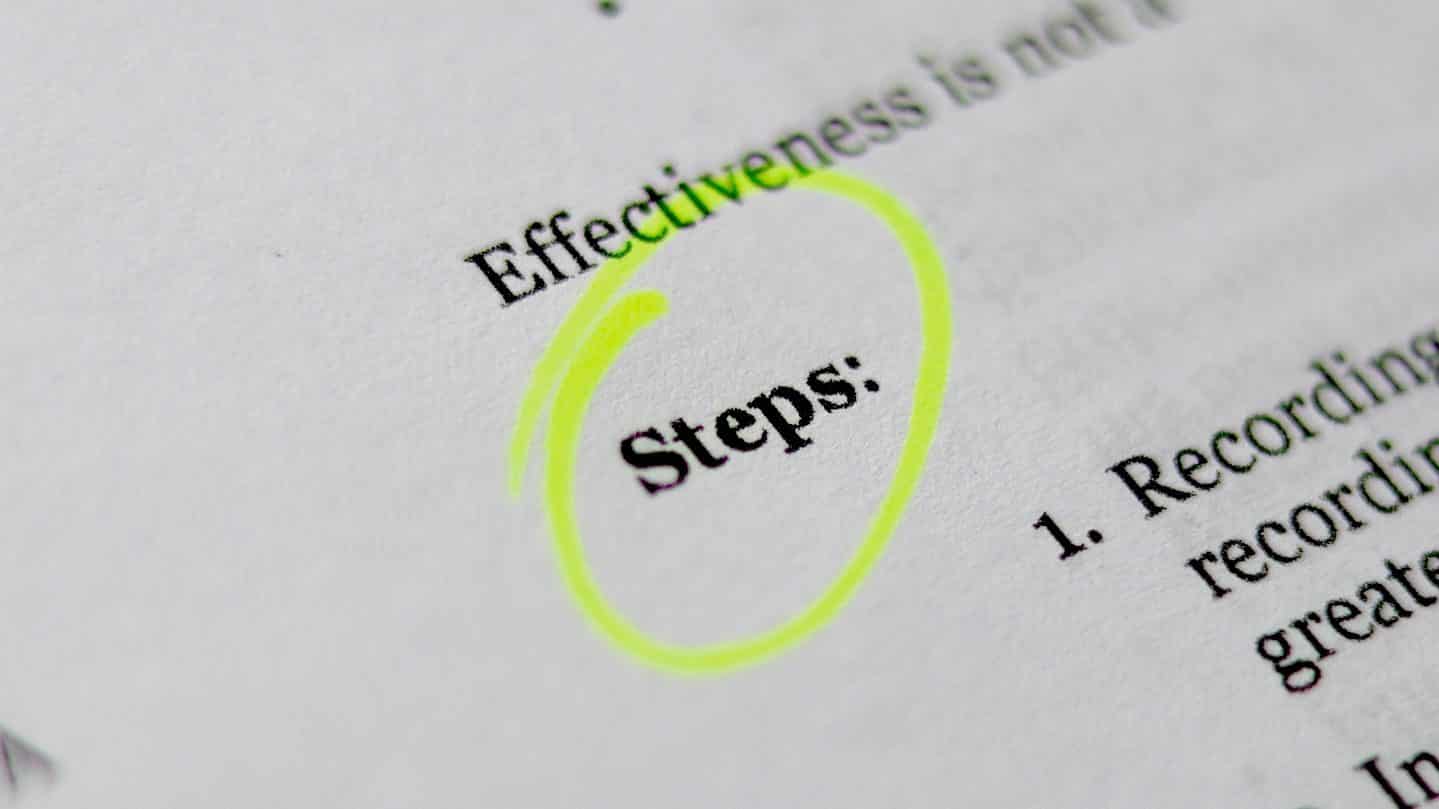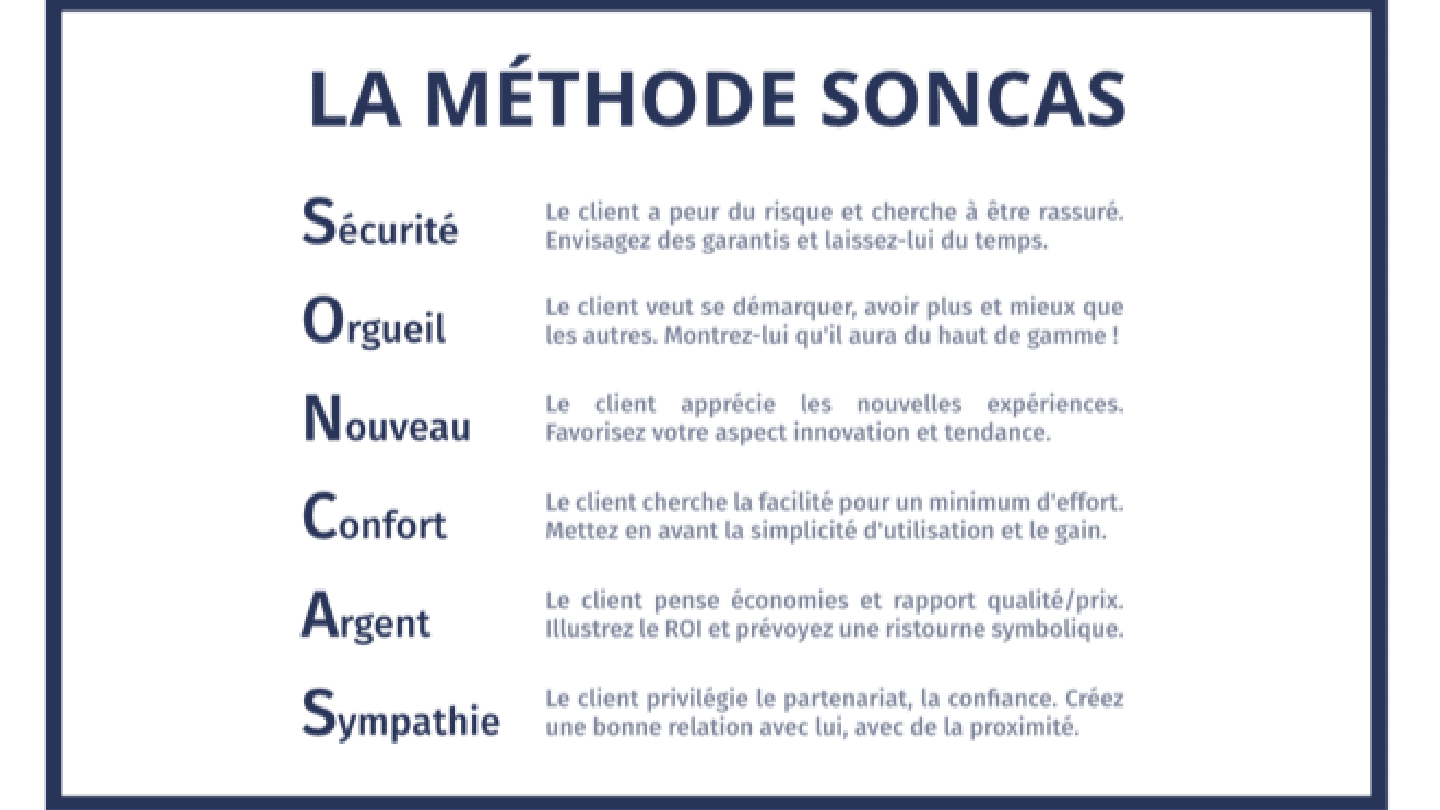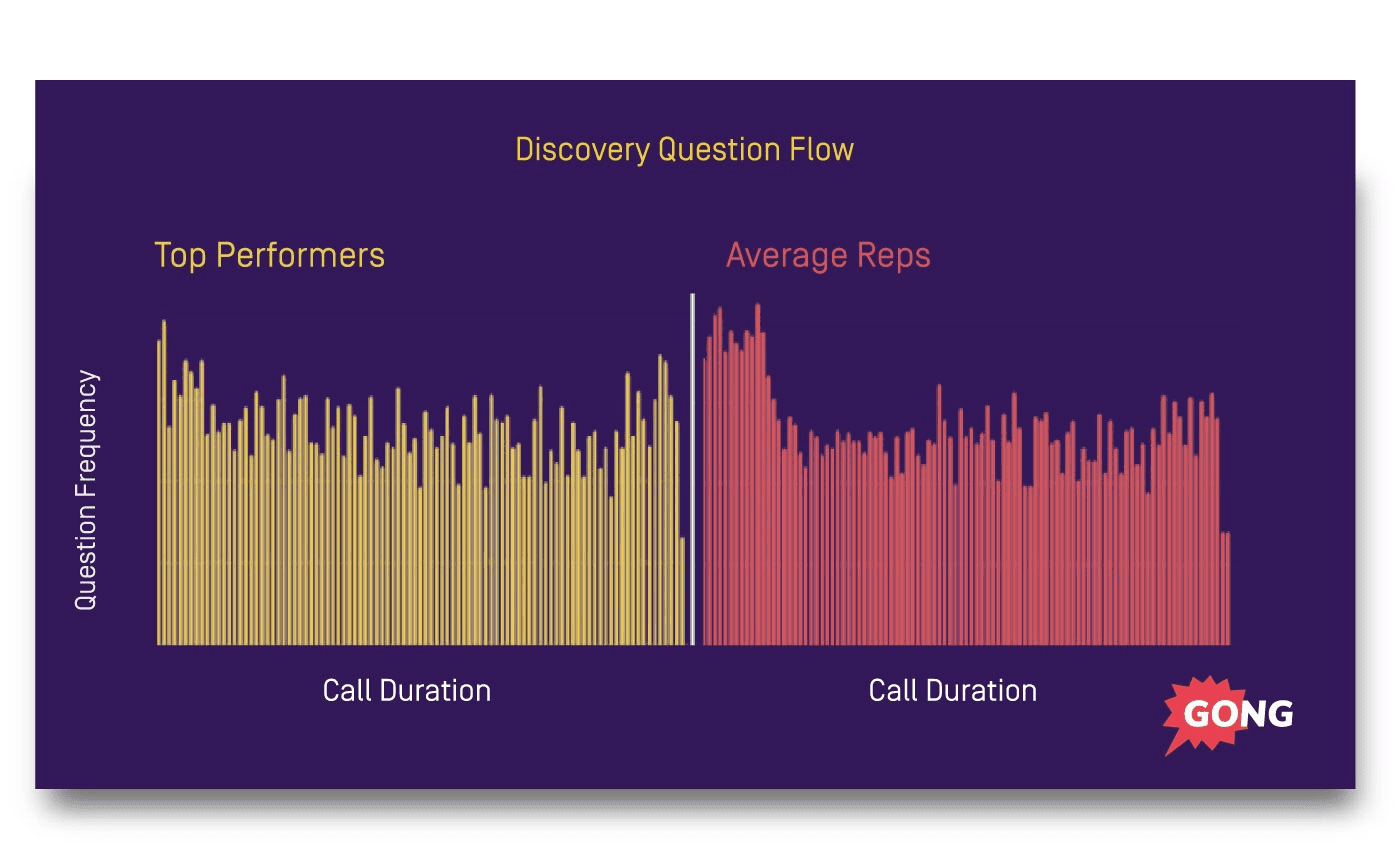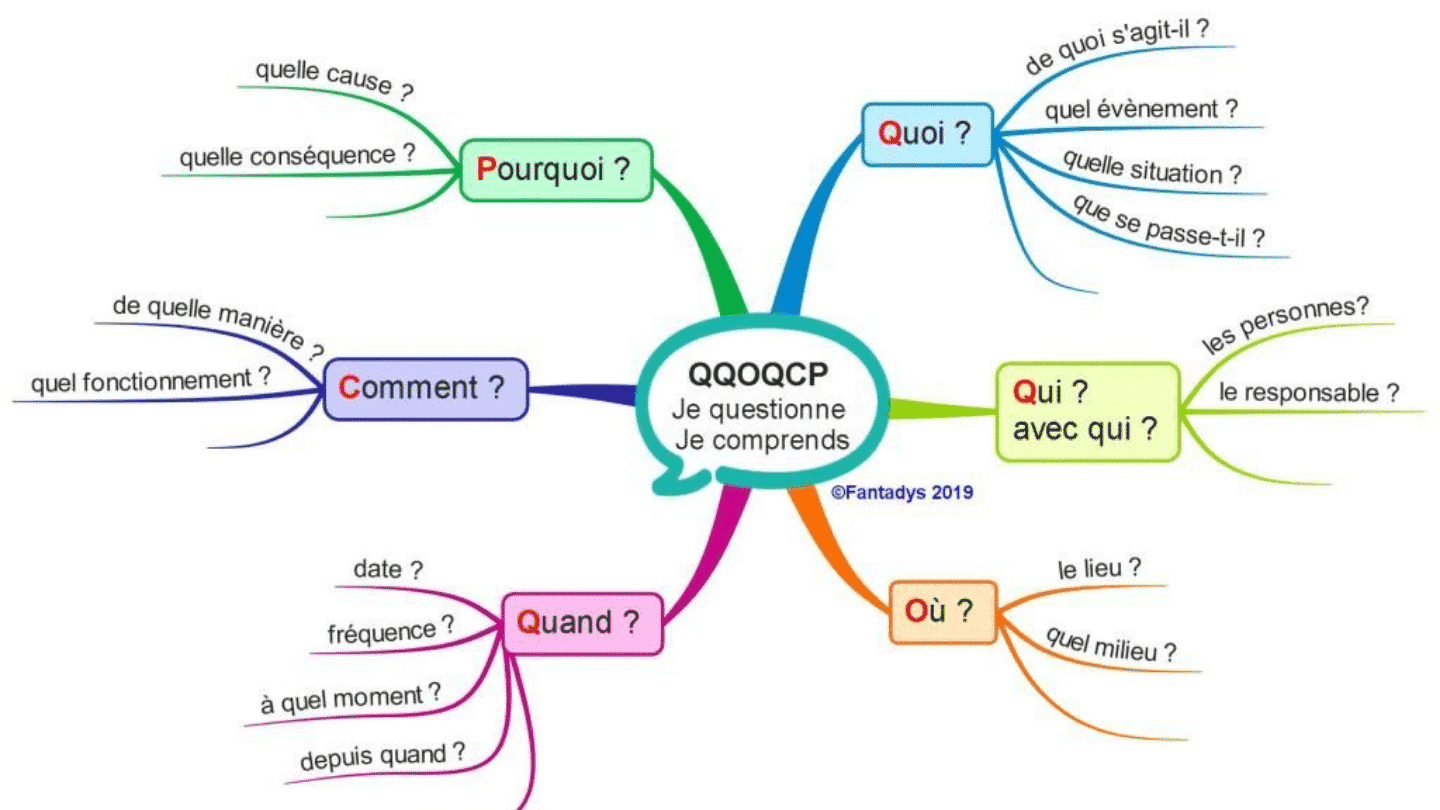The commercial discovery plan consists of 5 phases:
1. Identify the client context
2. Understand the needs
3. Uncover buying motivations
4. The pitch
5. The next steps
In this article, we offer you a complete guide to designing a successful sales discovery plan, and at the end of the article we offer you some sample questions to include in your scripts.
Sommaire
What is a discovery plan? Definition

The discovery plan is a series of questions – some call it a script – that is designed to help your salespeople identify the information that will enable them to make the right diagnosis and offer the right deal to the prospect.
A well-structured discovery plan collects relevant information. This data allows you to refine your sales arguments. In this way, your sales representatives can better understand the objections of the person they are talking to.
Going further
To optimise your prospecting and improve your chances of closing a sale, discover our guide on commercial prospecting techniques.
Why is the discovery plan an essential component of your sales process?
The customer discovery plan provides little information to trigger a purchase. In fact, information is rarely delivered during an interview.
This is why we recommend that you ask your prospects questions. Your teams can take the time to analyse the answers, understand them and come up with a more convincing argument.
This shows that it is essential to focus on the customer and their needs in order to sell better. If you are too focused on your targets, figures or bonuses, you may not be convincing enough.
The interviewer will have difficulty interpreting your sales message. The proposed sales pitch does not really correspond to their expectations. This ultimately results in a refusal at the time of closing.
Going further
In a dedicated article, we discuss the different ways to set up efficient and relevant sales processes.
What is the objective of the customer discovery phase?

The discovery phase provides essential data on the customer’s background, expectations, needs or buying motivations. To sell better, it is important to have access to this information. This is a crucial step for your sales teams.
Sales people need to be focused and actively listen. It is recommended that your teams take notes. This allows you to identify the reasons for buying afterwards.
By carrying out an accurate sales diagnosis, your teams can turn more prospects into customers. The idea is to make them long-lasting, by turning them into influencers and ambassadors for other prospects.
Structure of the Business Discovery Plan

#1. Identify the customer context
All prospects/customers need a solution that meets a need. This is also known as a customer problem. By the time the prospect contacts your team, he or she must have already done some research into solutions that might satisfy his or her immediate need.
It is therefore important to seek out this information through a discovery plan. Identifying the customer’s context allows you to understand the origin of their needs as well as their desire (or not) to change their priorities.
In order to master the context your teams need to be able to answer some of these questions:
- What events are likely to influence the prospect’s final decision?
- What actions have already been taken and what decisions has it been able to take?
- What are the observed results?
- What analysis does the prospect make of his situation?
The FARP method
To identify the customer context, it is recommended that you study the FARP method:
- Gathering the Facts,
- Actions taken,
- the Results obtained,
- and the Perception of your interlocutor (his opinion and feelings).
Pro tip
Adapt your questions and your pace to the “level” of your interviewer: C-levels (CMO, COO, etc.) are more pressed for time. They therefore have much less patience. Use only 4 to 8 quality open questions to find out their business needs. After that, success rates drop considerably.
#2. Understanding customer needs
Researching and understanding your prospect’s needs helps to identify what they want to change or improve. To make it easier for them to make a decision, both you and they should share the same analysis of their needs.
You need to know what the client wants to achieve or improve. You also need to understand why this goal is important to them.
Your understanding will be complete once you have understood and listed all the customer’s needs and prioritised them.
Here are some questions that may be useful to you:
Sample questions:
“How do you manage the challenges of integrating and ramping up new recruits as your team grows?”
“To what extent is time an obstacle to coaching your representatives more frequently?”
#3. Uncovering purchase motivations
Behind every customer need is a motivation. The objective of your sales teams is to determine the prospect’s underlying motivation. This allows you to propose a much more effective sales pitch.
This study of deep motivation requires a carefully conducted discovery plan. The more your teams gather relevant information likely to trigger a purchase, the more the sales proposals will be in line with the expectations of the contact.
Enriching the customer discovery plan, including note-taking, is essential. This will make you appear more professional and involved with the prospect, while retrieving high value data.
The SONCAS method

In sales, the SONCAS method (Security, Pride, Novelty, Comfort, Money, Sympathy) is simple to implement. It consists of identifying the prospect by asking questions to better understand their profile, their expectations and the reasons for their purchase.
The salespeople then direct their arguments in such a way as to bring them closer to the prospect’s ideal. Beware, other elements come into play, including the subconscious, which accounts for 90% of the decision.
Here are some questions that may help you to do this:
Sample questions:
“How much turnover per sales person do you think you are currently missing out on, due to your training time, which you feel is two months too long?”
“If you could coach your reps more frequently, how many more deals do you think they would manage to close?”

In the graph on the left, we see that the most successful salespeople are those who ask a series of questions throughout the call. They do not consider the discovery plan as a “static” element. In other words, they ask their questions as the discussion evolves.
On the right you can see that “average” salespeople ask most of their questions in the first few minutes of the call. They do not take into account the evolution of the discussion. Very quickly, the number of topics and questions asked decreases until it is very low in the final moments of the call.
Pro tip
Limit the number of questions you ask here (between 11 and 14 questions). Too many questions make the conversation painful & difficult. Don’t load your questions at the beginning of a call. Listen, and adapt them to create a real dialogue.
#4. The pitch
Empathising with your customer through storytelling is important. Your prospects base part of their decision on the challenges faced by people with similar experiences, rather than on what your salesperson thinks is good or bad for them.
This is one of the reasons why many companies offer case studies. These testimonials demonstrate how your offer or service has helped a company solve a problem.
Storytelling is an excellent alternative to advanced sales questions that can be a barrier to salespeople. To be prepared, however, it is recommended that you do not improvise and prepare your approach, by :
- Consulting the account history via your CRM software
- Checking the recent activity of the company and of your contact person
- Spending some time scanning press articles and releases for any significant updates, initiatives, hires or changes.
- Using LinkedIn to identify your common connections and highlight them where appropriate.
These elements allow you to prepare in advance the story you could tell your prospect.
Pro tip
If you are able to trigger emotion in this phase, name these emotions, help clients feel understood with phrases such as: “it seems like…”; “it seems like…”; “it seems like…”; “it seems like…”; “it seems like…”. “it feels like…”
#5. Preparing the next steps

The purpose of the discovery plan is to move the prospect through the funnel and close them. If your salesperson feels that their first approach has been successful, they should summarise why the product/service offered seems useful to the prospect.
There are two ways to do this:
- The “hypothetical” closing: this method allows you to confirm to your prospect how you feel you can help him or her move towards his or her goals and meet the challenges identified during the call. The objective is to approach the subject with a tone that inspires confidence in the caller, without overselling the product.
- The “prospect buy-in” closure: This method invites the prospect to tell you what challenges they face, while asking you how they can achieve this through the use of, for example, your solutions.
The last important aspect of closing is the involvement of other parties in the sales process. In practice, few salespeople do this. Many lose the opportunity to shorten the sales funnel.
What questions should I ask a customer during the commercial discovery phase?
#1. Open questions: QQOQCP method

This method aims to define the circumstances of a situation through a series of questions. This allows the situation to be understood in its generality. In a commercial setting, the salesperson then finds the most appropriate solutions to the prospects’ needs, after analysing the data.
The QQOQCP questions allow the prospect to speak. They express themselves freely about their expectations, needs and motivations. They develop constructed answers that are interpreted by the salesperson.
Some examples of questions are
#2. Closed questions
The purpose of closed questions is to obtain a specific answer from the prospect, usually “yes” or “no”. This provides information that can help them choose between different solutions. Finally, you can obtain factual information (figure, date).
In a discovery plan, the point of these types of questions is to confirm understanding of what is being said. You can use these questions to push the interviewer to validate a proposition or to obtain quantifiable data.
Attention
Your sales meeting is not meant to be an interrogation. This is why we recommend that you analyse the situation in order to bring your added value as a salesperson, through interesting information or information likely to appeal to the prospect, at the most appropriate moment.
#3. Commercial reformulation
Sales reformulation allows the prospect to confirm your analysis of the elements obtained during your discovery plan. This enables you to formulate a relevant commercial offer that meets the prospect’s needs.
There are several types of reformulation:
- ECHO rephrasing: you need to make the prospect understand that they are being listened to. This encourages them to expand on what they have said in order to make it more complete.
- Rephrasing Inference: the aim of the salesperson is to increase their knowledge of the customer.
- Rephrasing Summary: the idea is to validate a situation expressed by the prospect, in order to move the exchange forward towards the objective you have set yourself.
#4. After the questions, active listening

It is estimated that the best salespeople speak for an average of 46% of their prospecting call. They leave 54% of the total talk time to their prospect.
Of course, talking 46% of your call time will not magically close your offer. This is the ideal threshold. Beyond 65%, on the other hand, the risk of losing attention and therefore cancelling your offer is high.
Experience helps to better structure your calls to achieve this statistic. Coupled with a discovery plan and the ability to adapt to the needs of your customers, you can see your statistics improve.
How to adapt your discovery plan to the customer’s posture?
The salesperson must obviously adapt the discovery plan to each customer, but this can be facilitated by proposing a framework, for example based on the customer’s posture. Depending on whether the customer is cooperative, reluctant, or indifferent, you can modulate the plan to suggest leads to your teams and guide their reaction.
Cooperative client
A cooperative customer is one who is willing and able to provide information during the commercial diagnosis. This is the most obvious sales situation. It is the easiest case for your sales teams to handle.
Pro tip
You are invited to collect the FARPs by alternating open/closed questions and rephrasing to obtain the context, priority needs and motivations of the client.
Reluctant customer
A reluctant customer finds it difficult to provide information during a sales meeting. They are distrustful or unable to hold a dialogue and do not go into detail.
You are invited to provide your customer with information with a very high added value. This will make him react:
- Build on previous information: Build on the data collected in your previous interviews. You can then link the data to the marketing information you are planning to offer.
- Share data and factual information with them: get them to react by offering them figures (key indicators, studies). This opens up the dialogue and allows for a more in-depth exchange.
- Put your offer in front of the competition: why is your offer better than your competitors’?
- Use social proof: highlight your recommendations, awards or case studies. This allows the customer to react and engage in discussion.
Indifferent customer
In some cases, the other person may not perceive any interest in talking to you. They may have no desire to change their situation or change their point of view. This is called the indifferent customer. This is the most complicated case for sales teams to handle.
Going further
You can find out more about our content related to cold calling and closing techniques through :
- Our complete guide to cold calling
- Our call and sales scriptlist
- Our complete guide to help you close faster
- Our phone plan
- Our selection of the 10 phoning software to make your prospecting explode






